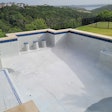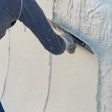I've got a story coming out in the June issue about problems with chlorine shocking techniques. For a long time, in our attempt to get rid of chloramines, we've been trying to read chloramine level in a pool and then hitting it with 10x that amount of chlorine.
While it's true this process does a good job in eliminating inorganic chloramines, some legitimate scientists (Professor E. R. Blatchley and Dr. Jing Li at the Purdue University School of Engineering and Dr. Tom Tufano, senior R&D chemist, at DuPont) have pointed out that these high doses of chlorine are useless against organic chloramines, and worse, cause the formation of nasty, hazardous airborne chemicals which cause problems in the lungs of swimmers and especially children and people with asthma. Of course, this is much more of a concern with indoor than outdoor pools.
Still, we've been hearing more and more about the effects of these airborne chemicals in recent years in research studies, and I think, as a health and safety concern, this will become an ever larger issue in the years to come.
There are two basic points here:
1) Complex organic chloramines are unaffected by chlorine shock treatments. They just sit there in the pool, and continue building up over time.
2) These large shock doses of chlorine react with organic contaminants to form a variety of characters we don't want hanging around our swimming pools.
The basic problem remains, however, how do we get rid of chloramines. Ozone is a great oxidizer of chloramines but it carries a price tag that many can't afford. Potassium Monopersulfate doesn't deal with organic chloramines either, although it doesn't seem to have the problems that chlorine does in producing unwanted by products.











































